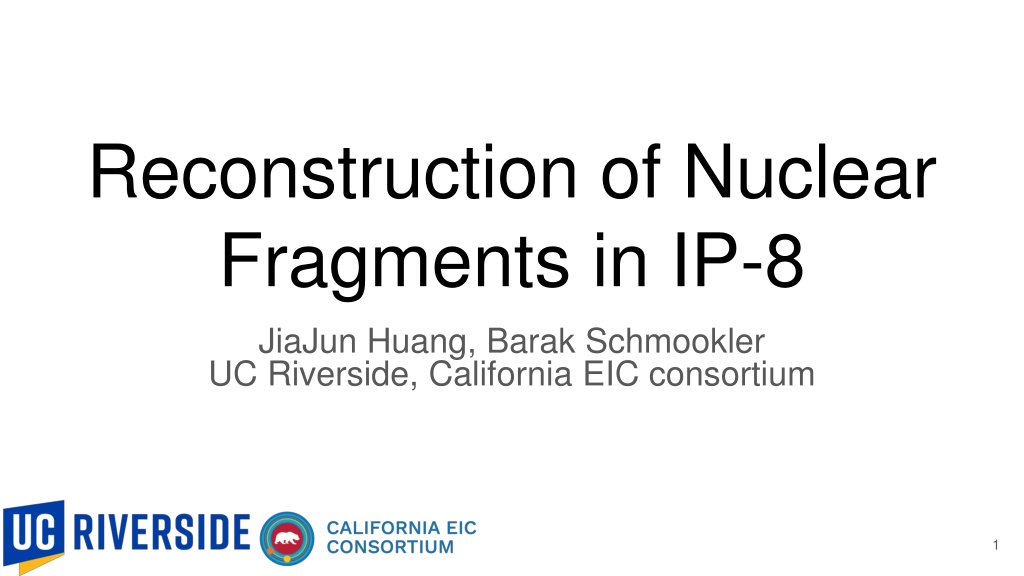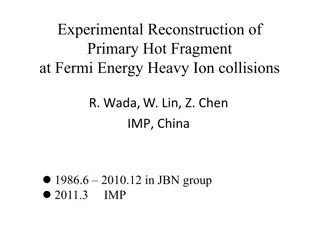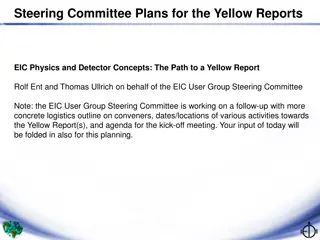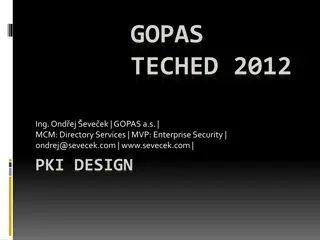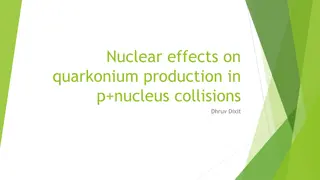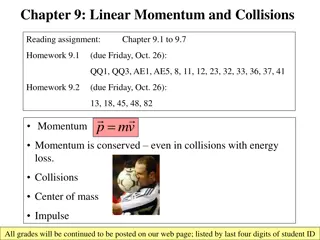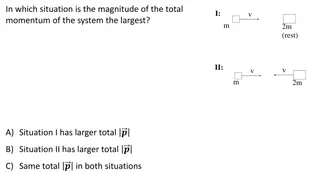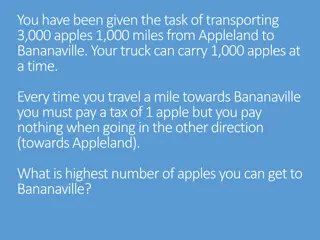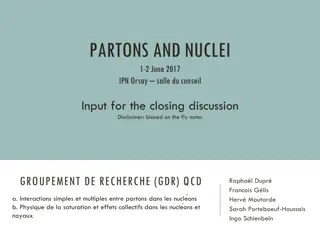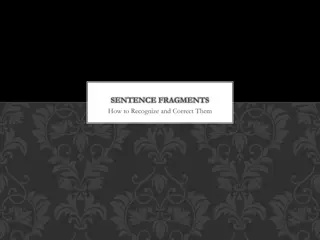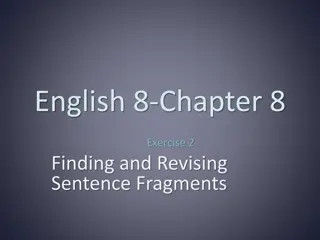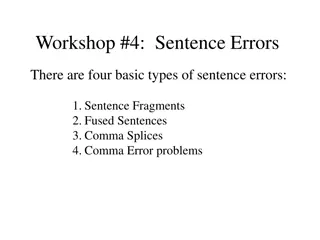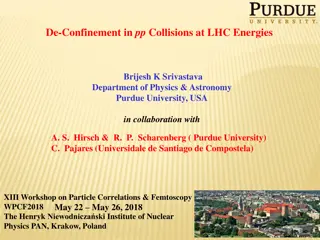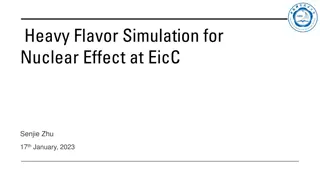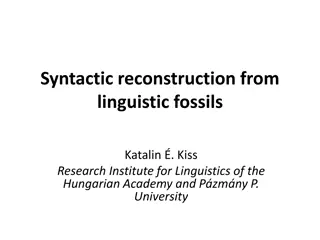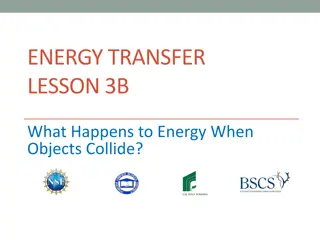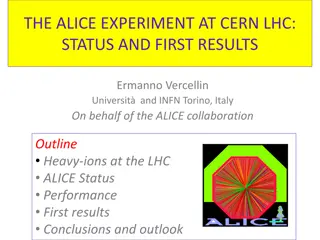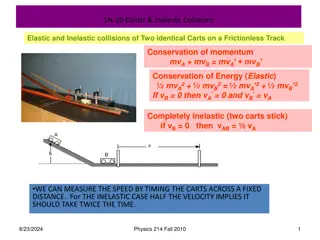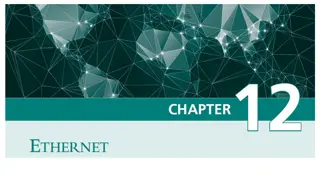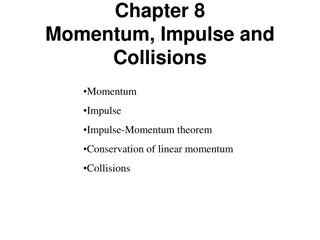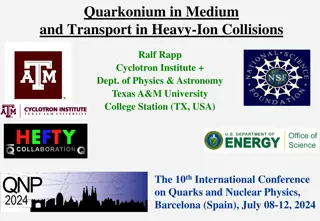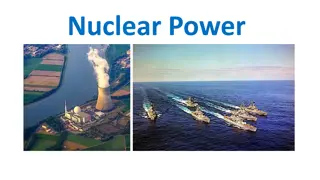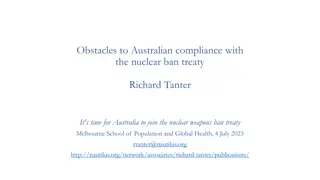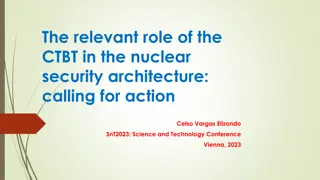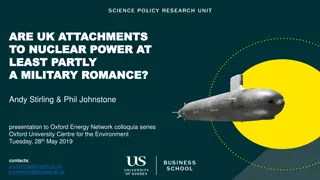Reconstruction of Nuclear Fragments in EIC e-A Collisions
Investigating nuclear fragment production in EIC e-A collisions through modeling scattering and decay processes using event generators like BeAGLE and FLUKA. Focus is on reconstructing pre-fragments based on nuclei and escaped nucleons, with detectors in far-forward regions aiding in trajectory and Z detection. Results show a confined region of ablated neutrons within the ZDC acceptance.
Download Presentation

Please find below an Image/Link to download the presentation.
The content on the website is provided AS IS for your information and personal use only. It may not be sold, licensed, or shared on other websites without obtaining consent from the author. Download presentation by click this link. If you encounter any issues during the download, it is possible that the publisher has removed the file from their server.
E N D
Presentation Transcript
Reconstruction of Nuclear Fragments in IP-8 JiaJun Huang, Barak Schmookler UC Riverside, California EIC consortium 1
Introduction - EIC e-A collisions have the possibility of inducing fission or evaporation of the excited pre-fragment nucleus, as well as Fermi-breakup and multi- fragmentation We use the BeAGLE event generator to model the initial scattering + intranuclear cascade; and FLUKA and ABLA07 to then simulate the decay of the excited pre-fragment Previous studies of production and detection of nuclear fragments were shown at the 2023 EIC UG meeting (here) Focus in this presentation will be on the reconstruction of the pre-fragment based on nuclei and escaped nucleons - - - 2
One way the 2ndfocus can be used Nuclear fragments Hard scattering and intranuclear cascade High-energy fission or evaporation Decay of radioactive isotopes Gamma de- excitation Incoming GeV electron beam and 100 GeV/nucleon heavy ion beam Excited intermediate nucleus (i.e. pre- fragment) Fission or evaporation products Isotopes in ground state and gammas Detector Level Isotopes after radioactive decay Abraded Ablated t = ? never (stable) t = 10-22s t = 10-20- 10-17 s t = 10-14s t = 0 3 Slide from: Barak Schmookler
EIC Detectors far-forward region - - - B0 and ZDC detect neutron and gamma ray Roman Pots detect the fragment trajectory and A/Z Fission Product Detector (cherenkov or scintillator) detects fragment Z 4 Slides from: Barak Schmookler
BeAGLE excited pre-fragment production distribution Production of excited pre-fragment nuclei can have a variety of N & Z combination from the 238U beam What we want to measure 5
BeAGLE + FLUKA 100,000 event generation of scattering + decay process of e+238U collision 60510 fission di-fragment events Evaporation Region Fission Region 33650 evaporation events Other events includes: 6% - - Multi-fragmentation Fermi-breakup 6
Results from FLUKA - Kinematics of neutrons from the BeAGLE+FLUKA simulation show a confined region within the ZDC acceptance that the ablated neutrons will hit. Abraded nucleons within the angular cut will result in background noise for reconstructing the pre-fragment - Abraded nucleons: produced in the hard scattering or intranuclear cascade. Ablated nucleons: produced during the de-excitation of the excited pre-fragment. 7
Neutron kinematics - Abraded neutrons have a wide range of angular and energy spectrum Ablated neutrons are confined into smaller theta and close to the beam energy - Abraded nucleons: produced in the hard scattering or intranuclear cascade. Ablated nucleons: produced during the de-excitation of the excited pre-fragment. 8
Fission reconstruction using only neutrons Using neutrons seems to be enough for reconstructing the pre-fragment Reconstructing the A of fragment 1(2) will require the Roman Pots and a detector to determine Z. 9
Light charge nuclei events - The previous plot filtered away events with light charged particles (Deuterium, He3, He4), which consist of ~7% of the fission events But we hope to also detect and differentiate those particles, so we are expecting the same reconstruction as before - Counting light charge particle production events 10
Results from ABLA - reconstruction - We also use ABLA and follow the same method to find the fragments from fission events and reconstruct the pre-fragment based on the neutrons ablated from the decay model The same abraded neutrons were applied as background in FLUKA and ABLA, since we use the pass the same set of BeAGLE events into both de- excitation codes. - 11
Comparing ablated nucleons from FLUKA and ABLA The pre-fragment decay process can produce nucleons and light charge particles. FLUKA and ABLA are in general agreement on production rates. 12
Impact parameter anti-correlation Anti-correlation between impact parameter (b) vs. ablated nucleons for possible hadronization studies 13
Increasing the number of abraded nucleons (A_beam - A_prefragment) means a larger intranuclear cascade Impact parameter anti-correlation which happens more often in central collisions. Anti-correlation between impact parameter (b) vs. ablated nucleons for possible hadronization studies potentially more robust way to determine centrality than using only the neutrons in the ZDC. So, reconstruction of the pre-fragment can allow a 14
Photon kinematics at ZDC Two primary group of interest: Photons energy is distinctive between fragment de-excitation and particle decay - - pi0 fragment de- excitation from the fission and evaporation process FLUKA is not able to differentiate the photons from de- excitation of fragments 15
Expected photon flux per event Di-photon production from pion can undergo further decay into electron or interacting, resulting in odd number of photons 17
Expected photon flux from non-fragments Pion is not distinctive in the total photon production process 18
Expected photon flux from non-fragments At the ZDC, pion have a better resolution from other background photons 19
Gen4 2nd Roman Pots simulation Fragment separation in X is larger than Y, due to configuration of magnets Magnet effects accounted for fragment separation 21
